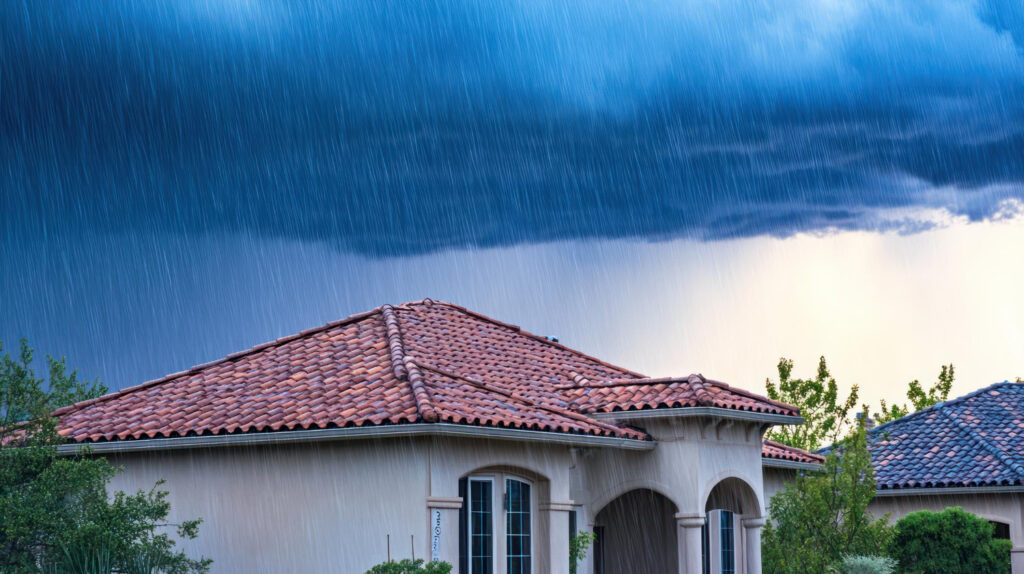Living in the Mid-Atlantic region of the East Coast—specifically in the DMV (DC, Maryland, and Virginia)—means experiencing a wide range of weather throughout the year. From hot, humid summers to ice storms and heavy rains, homes in this area take a beating. And one of the most impacted parts of your home? Your roof.
While roofing systems are built to be durable, not all weather bad as the others when it comes to long-term wear and damage. So, what exactly is the worst weather for your roof in this region? Let’s break it down by the types of conditions that most commonly wreak havoc on Mid-Atlantic roofing systems—and what homeowners should watch out for when calling roofing companies Annapolis MD to fix their roof after bad weather.
1. High Winds and Thunderstorms
The Mid-Atlantic is no stranger to severe thunderstorms, especially during spring and summer. These storms often bring strong wind gusts that can lift shingles, crack tiles, and even cause small or large branches or even entire trees to fall onto your roof. Winds can also create pressure differences across your roof, loosening materials and weakening its structural integrity.
What to look for afterward:
- Missing or curled shingles
- Debris accumulation
- Loose flashing around chimneys or vents
2. Heavy Rain and Flash Flooding
While rain itself might not seem like a huge problem, prolonged or intense rainstorms—common in this area during summer storms or hurricane season—can expose vulnerabilities in your roofing system making you need roof restoration Leesburg VA services. Water can find its way under damaged shingles, deteriorated flashing, or clogged gutters, leading to leaks, rot, and mold.
Hurricane remnants that pass through the DMV can have several inches of rain in just a day or two, overwhelming drainage systems and causing roof-related water damage.
Water is your roof’s slow enemy—you may not see the damage right away, but over time, even small leaks can become costly.
3. Ice Storms and Freeze-Thaw Cycles
Unlike the Northeast, where heavy snow is a bigger issue, the DMV sees more ice than snow during the winter months. Ice storms can be particularly brutal. When freezing rain coats your roof, it creates ice dams—thick ridges of solid ice that trap melting snow or rain behind them. This water backs up under your shingles, potentially leaking into your attic or walls. Add to that the frequent freeze-thaw cycles, especially during late winter and early spring, and you’ve got another major stressor for roofing materials. Water expands when it freezes, so any moisture trapped in small cracks or seams can widen them over time, creating vulnerabilities.
Signs of ice damage:
- Sagging gutters or downspouts
- Water stains on ceilings or walls
- Peeling paint near roof lines
4. Extreme Heat and Humidity
While snow and ice get a lot of attention, don’t underestimate the power of summer heat. In the Mid-Atlantic, temperatures in the 90s are common, with heat indexes often climbing over 100°F thanks to humidity. Roofs—especially dark asphalt shingles—can reach temperatures of 150°F or more on hot days.
Prolonged exposure to these conditions can dry out shingles, cause cracking, and speed up the aging process. Heat can also make attic ventilation even more critical. Without proper airflow, trapped heat can bake your shingles from underneath and increase your cooling costs.
Problems caused by heat:
- Blistering or buckling shingles
- Accelerated aging of materials
- Increased energy bills due to poor insulation
5. Hailstorms (Though Less Frequent, Still Dangerous)
Hail isn’t as common in the DMV as in parts of the Midwest, but it does happen—and when it does, it can cause serious damage. Even pea-sized hail can dent shingles, break tiles, or damage flashing and vents. Worse, hail damage isn’t always visible from the ground and may not lead to immediate issues, meaning it often goes unnoticed until leaks develop later.
After a hailstorm:
- Schedule a professional inspection
- Look for bruised shingles or granule loss
- Check for damage to gutters or skylights
So, What’s the Worst of All?
It’s not just one type of weather event that puts your roof at risk—it’s the combination. The Mid-Atlantic region is unique in that it experiences nearly every type of damaging weather throughout the year, just not always in the most extreme forms. The cumulative impact of seasonal changes—from scorching summers to freezing rain and everything in between—makes this region especially tough on roofing systems.
If we had to crown one “worst” weather type, it might be ice storms and freeze-thaw cycles, simply because the damage can be so hidden and progressive. But summer storms with high winds and heavy rain run a close second for their more obvious, immediate impacts.
What Can Homeowners Do?
To protect your roof from the Mid-Atlantic’s unpredictable weather:
- Get regular inspections (at least once a year, or after major storms)
- Keep your gutters clean to prevent water damage
- Trim trees near your roof to lessen the risk of falling limbs
- Watch for signs of damage inside your home (like ceiling spots or drafty areas)
- Work with a trusted local roofer who understands regional challenges
Your roof is your home’s first line of defense against the elements. In a region like the DMV, where Mother Nature runs the full weather gauntlet, staying proactive can save you thousands in repairs—and offer peace of mind year-round.


